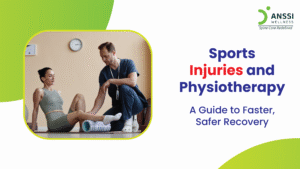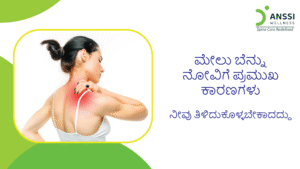Pain, stiffness, and decreased mobility are the main symptoms of Ankylosing Spondylitis (AS), a chronic inflammatory disease that mostly affects the spine. If you ignore it for a long time, AS can lead to the fusion of spinal vertebrae, significantly limiting flexibility and affecting posture.
While there’s no cure, daily exercises and stretches can play a vital role in managing symptoms naturally and maintaining the quality of your life, without the need for medicines or surgery.
Understanding Ankylosing Spondylitis
AS begins as inflammation in the joints of the spine, most often in the lower back and pelvis. As the disease progresses, it can lead to stiffness and eventually the fusion of spinal joints.
This reduces spinal flexibility and may result in a stooped posture. Breathing capacity may also be affected due to restricted movement in the chest area.
Early diagnosis and consistent, mindful movement can help slow down this progression. While complete reversal of spinal fusion isn’t possible, mobility can be preserved and pain can be minimised with the right set of exercises and posture-friendly habits.
Benefits of Daily Exercise for AS
Regular movement is one of the most effective non-medical interventions for Ankylosing Spondylitis. A consistent routine of stretching and low-impact exercises offers several benefits:
- Reduces stiffness: Especially after periods of rest or sleep
- Improves posture: By preventing a person from slouching or leaning forward
- Eases joint pain: By improving circulation and reducing inflammation
- Enhances flexibility and spinal mobility
- Boosts lung function: Through posture and chest-opening exercises
- Supports mental well-being: Movement helps reduce stress and anxiety, often associated with chronic pain conditions
The key is consistency. A few minutes of movement each day is far more effective than long, infrequent sessions.
Recommended Daily Exercises
Here are some gentle, easy-to-do exercises that can be performed at home without any special equipment. These are designed to improve spinal mobility, maintain posture, and keep your muscles active.
1. Neck and Back Stretches
These preserve upper spine mobility and lessen stiffness in the neck.
- Neck Rotation: Maintaining a comfortable posture, slowly rotate your head from side to side. Hold each side for 5 seconds.
- Neck Extension: Tilt your head back gently, then come back to the centre. Repeat 5 times.
2. Spine Mobility Movements
These promote spinal flexibility and help prevent fusion.
- Cat-Cow Stretch: Alternate between sinking your back down (cow) and arching it up (cat), while being on your hands and knees. Inhale as you look up, exhale as you round.
- Seated Twists: Sit with a straight spine and gently rotate your upper body to each side. Keep the motion smooth and pain-free.
3. Chest Opening Exercises
- Wall Stretch: Stand facing a wall, place one hand against it at shoulder height, and gently turn your body away. This stretches the chest and shoulder muscles.
- Deep Breathing: Inhale slowly, expanding your chest, and exhale fully. This not only relieves stress but also keeps the chest muscles flexible and improves lung function.
4. Hip and Leg Stretches
These workouts promote improved walking posture and preserve your hip flexibility.
- Hamstring Stretch: Stretch your hamstrings by sitting on the floor with one leg outstretched. Maintaining a straight back, reach for your toes. Hold for 10–15 seconds.
- Knee-to-Chest: While lying on your back, gently pull one knee toward your chest. Alternate legs.
5. Posture-Focused Exercises
These help strengthen postural muscles and maintain proper body alignment.
- Shoulder Blade Squeezes: Sit or stand upright and pull your shoulder blades together as if trying to pinch them. Hold for 5 seconds and release.
- Standing Alignment: Stand against a wall with your heels, hips, and head touching it. Hold for 30 seconds.
Tips for Safe Practice
Exercising with AS doesn’t need to be strenuous; it just needs to be regular and safe.
The following guidelines can help you make sure that you’re doing it correctly:
- Go slow and steady: Sudden or jerky movements can trigger pain or injury.
- Avoid high-impact activities: Running or jumping can place stress on inflamed joints.
- Listen to your body: If a movement causes pain, stop and modify it.
- Focus on breathing: Controlled breathing supports relaxation and improves oxygen flow.
- Stay consistent: Even 10–15 minutes daily can make a big difference over time.
If you’re unsure where to start, consult a physiotherapist familiar with Ankylosing Spondylitis. They can personalise a routine based on your condition and comfort level.
About ANSSI:
ANSSI Wellness focuses on improving the quality of life for patients suffering from spinal issues, aiming to provide relief where other conventional treatments have failed. Through advanced non-surgical spinal decompression treatment, ANSSI is committed to helping patients avoid surgery and recover in a safe, effective, and compassionate environment.
Connect with ANSSI Wellness on LinkedIn, Instagram, and Facebook for expert guidance.



